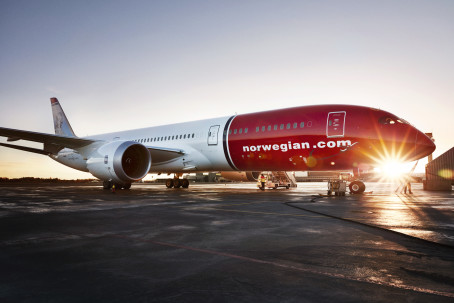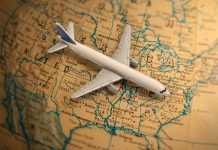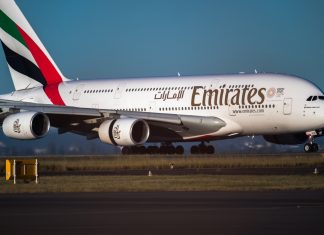Retreat from Ireland may be only the start, says Travel Weekly’s Ian Taylor
The contraction and retrenchment of Norwegian Air continued with the announcement this week that the carrier will end flights from Ireland to the US in September.
Norwegian will cease flying from Dublin, Cork and Shannon to the US and Canada from September 15.
The question is will it be enough?
Norwegian largely blamed the grounding of Boeing’s 737 Max since March for the commercial failure of the routes.
In a statement announcing the end of the services, Matthew Wood – Norwegian senior vice-president for commercial long-haul – said that “considering” the grounding of the Max, “a comprehensive review of our transatlantic operations” had led to the conclusion “these routes are no longer commercially viable”.
This begs a question. When were they commercially viable at the fares Norwegian made available?
The 737 Max grounding will have proved costly. However, if Norwegian was pricing its flights to make a profit or making money elsewhere, it would not be haemorrhaging cash.
Passengers will be offered the choice of a full refund or rerouting on to other services – presumably to the US from Dublin via Oslo, Stockholm or Copenhagen.
The carrier will continue to operate to these cities from the Irish capital and will retain a base at Dublin, so it is not all doom and gloom.
Norwegian began operating to the US east coast from Dublin, Cork and Shannon in 2017 after taking delivery of its first 737 Max in June of that year.
It has 110 of the aircraft on order.
Yet the carrier pulled its US flights from Edinburgh, launched with the 737 Max, last autumn – before the first of the two crashes which led to the aircraft’s grounding. So the lack of commercial viability can’t all be down to the loss of the smaller, fuel-efficient aircraft.
Kjos failed
Norwegian founder and former chief executive Bjorn Kjos stepped down last month, leaving chief financial officer and deputy chief executive Geir Karlsen to run the airline with chairman Niels Smedegaard, who joined in April, while seeking a new chief.
Under the new regime – and in the months running up to Kjos’s departure – Norwegian has repeated its new mantra: “From growth to profitability.”
Wood repeated this line while announcing the transatlantic retreat from Ireland, arguing: “We take a strict approach to route management.”
With apologies to Wood, this is hard to take seriously. The carrier launched domestic flights in Argentina last October to complement its Gatwick-Buenos Aires services and added Gatwick-Rio de Janeiro for £240 one way this March.
If the airline can’t make low-priced flights between Dublin and Boston or New York work, it’s a struggle to see it making a success in Latin America – particularly when neither Argentina nor Brazil are experiencing roaring economic success.
This appears less like route planning and more like taking a punt.
The harsh reality is it is not the routes Norwegian operated to the US from Ireland but the carrier’s fares that remain commercially unviable.
A season of reckoning?
Norwegian has made lengthy attempt to establish a viable low-cost, long-haul operation. The jury was out on whether it would succeed from the beginning. We appear to be nearing a verdict.
The carrier adopted the strategy of a Silicon Valley start-up – scale fast and win market share by undercutting competitors.
The growth figures look good and a business can haemorrhage capital so long as big investors buy into the ‘pot of gold at the end of the rainbow’ vision.
So, for example, Uber can lose $5.2 billion in its most recent quarter – that is three months – and carry on growing. But sooner or later there will be a reckoning.
Norwegian is approaching its.
Despite the 737 Max grounding, the carrier has more aircraft than it knows what to do with – hence some of its wackier route planning.
At the same time, for cost reasons it operates at the limit of its fleet’s resources – so when aircraft ‘go tech’ (suffer a technical problem) flights are delayed because the carrier can’t easily slot in a replacement aircraft.
Late last year, Karlsen noted: “We are struggling with our on-time performance in the long-haul business.”
This was due to maintenance issues with the Rolls Royce engines on the carrier’s Boeing 787s – not Norwegian’s fault, but an issue every operator of the 787 with Rolls Royce engines has had to deal with.
This had “a huge effect on our profit and loss”, said Karlsen. “We have struggled with [the] compensation due passengers [and] also the costs of leasing to replace the grounded aircraft.”
Unfortunately, this sums up Norwegian’s fundamental problem.
It may have been unlucky with the 787 engines and the 737 Max, but other carriers have suffered the same problems but operate different models.
Having slack in a schedule to cover unforeseen issues – like having cash for contingencies in any business – is a prerequisite for operating successfully.
Even the likes of easyJet and Ryanair can come a cropper on scheduling and suffer endemic delays for a period, but they have the resources to put it right.
What resources does Norwegian have?
The carrier reported its best-ever second-quarter results for the three months to June and an “underlying operating result before ownership costs” of NOK 2.3 billion or €240 million (£210 million) for the first half of this year.
Yet behind the headline figures was a net half-year loss of NOK 1.4 billion or €146 million (£131 million) compared with a net profit of NOK 254 million in the same period last year – when Norwegian went on to record an annual loss of NOK 1.45 billion.
At the same time, Norwegian’s debt more than doubled year on year to NOK 62.7 billion – €6.5 billion (£5.8 billion).
We will soon be into the autumn when the summer’s takings have largely to carry any European travel business through until next year and the chickens come home to roost.
Last autumn, card acquirers withheld credit card payments from Norwegian. The airline subsequently acknowledged this had caused cashflow problems “during the last few months of 2018”.
Will we see a repeat? If so, how long before Norwegian is forced to scale back at London Gatwick?
The airport is the carrier’s most important hub and vital to its attempts to develop a viable operation. If and when the announcement of cuts at Gatwick comes, we will know Norwegian is in serious trouble – if it is not already.


























